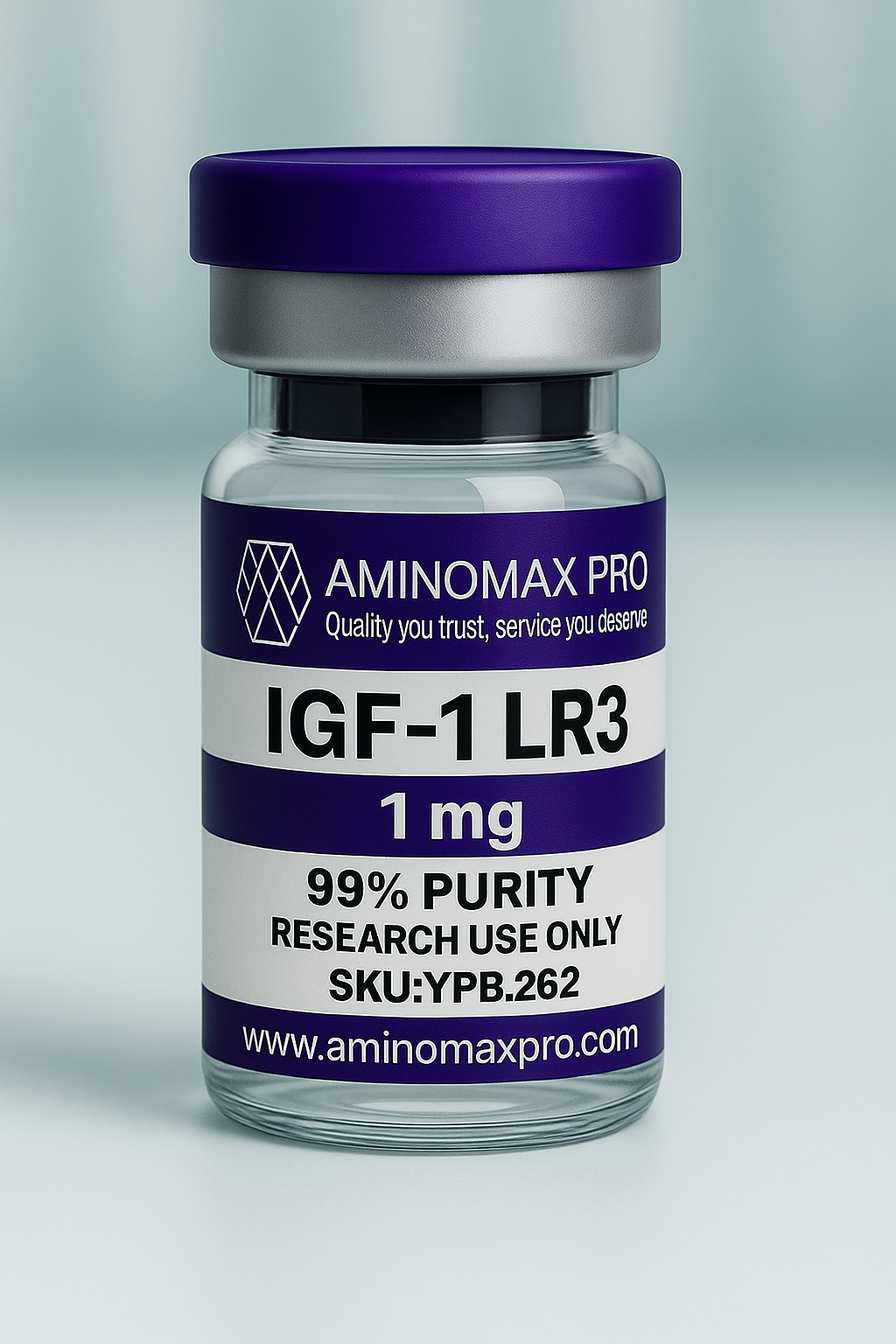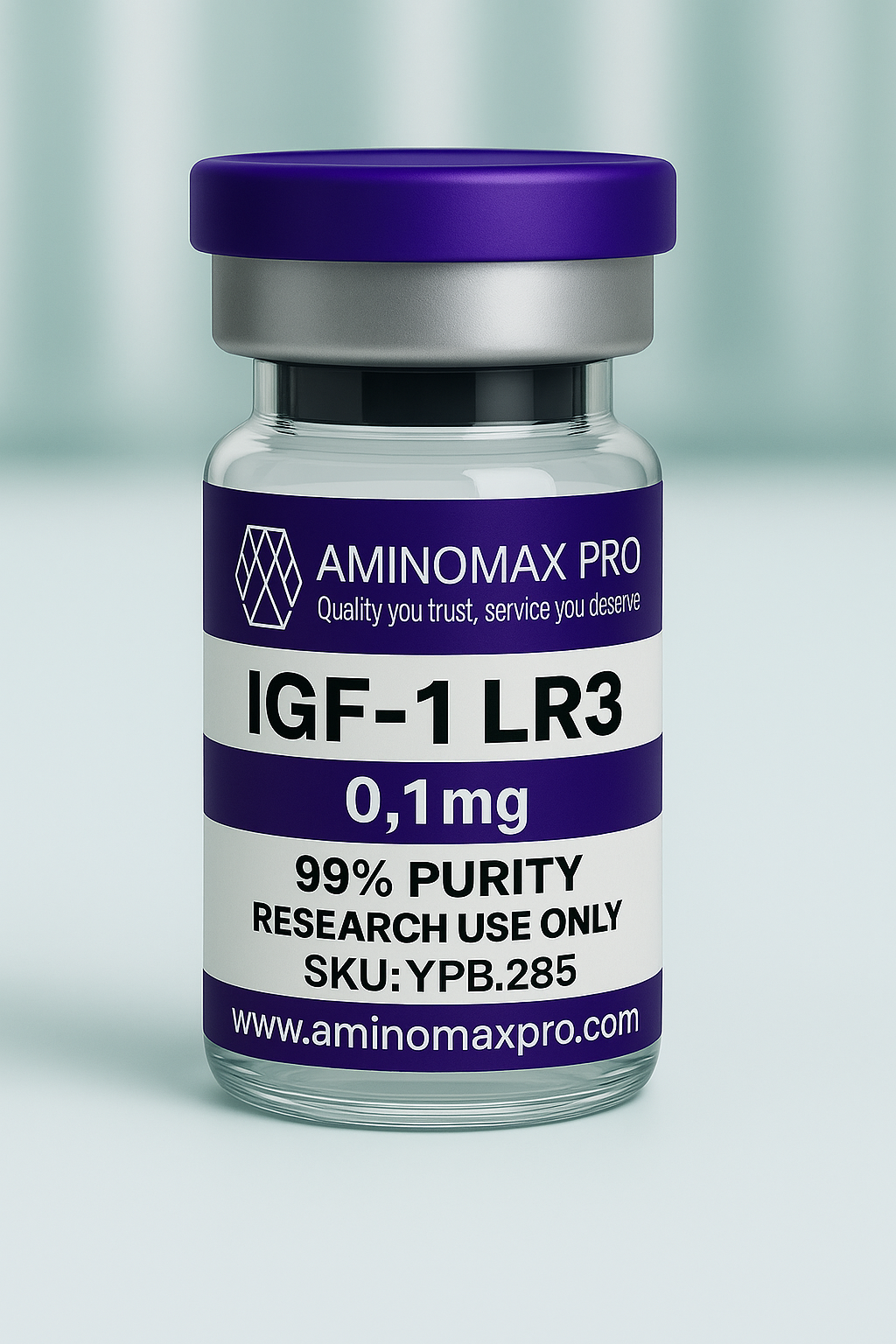Description
IGF-1 LR3 – Advanced Biochemical Mechanism Profile
(Long Arg3 Insulin-Like Growth Factor-1; IGF-1R Agonist; Prolonged Half-Life Peptide Analog)
IGF-1 LR3 is an engineered analogue of human IGF-1, modified at the third amino acid (Arg substitution) and extended 13 amino acids at the N-terminus.
These changes markedly reduce binding to IGF Binding Proteins (IGFBPs), resulting in prolonged bioavailability and sustained IGF-1 receptor (IGF-1R) signaling in vitro.
✅ 1. Primary Receptor Target
IGF-1 Receptor (IGF-1R)
-
Class: Tyrosine kinase receptor
-
Mechanism: Ligand binding → receptor dimerization → autophosphorylation
-
Cell types: Muscle, liver, neuronal, connective tissue, endothelial, and stem-cell models
Activation sequence:
-
IGF-1 LR3 binds extracellular α-subunits
-
Receptor dimerizes
-
β-subunit tyrosine autophosphorylation
-
Recruitment of IRS-1/2, Shc, and PI3K signaling complexes
✅ 2. Major Signaling Pathways
✅ A. IRS-1/2 → PI3K → Akt / PKB Pathway
Primary metabolic and growth pathway.
-
IRS-1 phosphorylation recruits PI3K
-
PI3K converts PIP2 → PIP3
-
Akt is phosphorylated by PDK1
-
Akt activates mTOR, p70S6K, 4E-BP1 → protein synthesis
Gene targets commonly monitored:
-
Myogenic factors: MYOD1, MYOG
-
Protein translation: RPL, RPS, EIF4EBP1
-
Mitochondrial biogenesis: PGC-1α
-
Anti-apoptotic genes: BCL2, MCL1
✅ B. Ras → Raf → MEK → ERK1/2 MAPK Pathway
Mitogenic and proliferative signaling.
-
IRS-1 and Shc recruit Grb2/SOS
-
Ras-GTP activates Raf
-
Raf → MEK1/2 → ERK1/2
-
ERK translocates to nucleus → induces transcription
MAPK-responsive genes:
-
FOS, JUN, EGR1
-
Cyclins (CCND1, CCNE1) for cell-cycle progression
✅ C. JAK/STAT Crosstalk
Some cell systems demonstrate:
-
STAT3/STAT5 phosphorylation
-
Gene activation associated with growth and differentiation
✅ 3. Second Messengers, Enzymes & Intermediate Proteins
| Component | Role in IGF-1 LR3 Signaling |
|---|---|
| IGF-1R | Receptor autophosphorylation |
| IRS-1 / IRS-2 | Scaffold for PI3K and Grb2 |
| PI3K | Converts PIP2 → PIP3 |
| Akt / PKB | Cell survival, metabolism, protein synthesis |
| mTORC1 | Translation control, ribosomal biogenesis |
| MEK / ERK | Proliferation gene transcription |
| S6K / 4E-BP1 | Protein synthesis machinery |
✅ 4. Gene-Level Outputs (Frequently Measured in Research)
| Functional Class | Representative Genes |
|---|---|
| Protein Synthesis / Hypertrophy | mTOR, S6K1, 4EBP1, EIF4E |
| Muscle Growth | MYOD1, MYOG, IGF-1, IGF-1R |
| Metabolism / Mitochondria | PGC-1α, CPT1B, NRF1 |
| Cell Cycle | CCND1, CCNE1 |
| Anti-apoptotic | BCL2, MCL1 |
| MAPK-responsive | FOS, JUN, EGR1 |
✅ 5. Why LR3 Has Prolonged Activity
-
Reduced affinity for IGF Binding Proteins (IGFBP-1 to IGFBP-6)
-
Greater fraction remains free in the extracellular compartment
-
Longer receptor availability → extended PI3K/Akt and MAPK activation
Research-Only Use Classification
IGF-1 LR3 is supplied solely for controlled in-vitro laboratory research.
It is not approved for human or animal consumption, injection, ingestion, therapeutic application, or diagnostic use.



